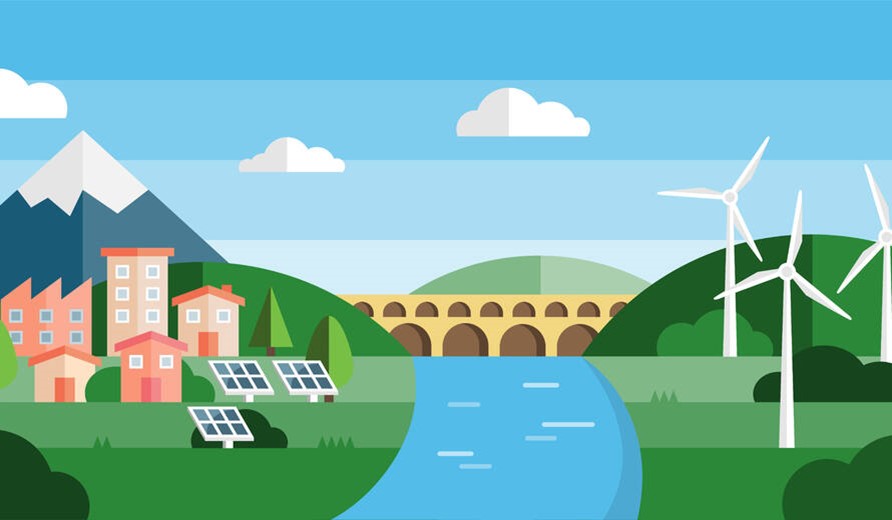Written by Riki Argyropoulou, junior surveyor at Wattcrop.
In an era marked by pressing environmental concerns and a growing recognition of the value of cultural heritage, the convergence of cultural heritage conservation and green energy initiatives presents a unique opportunity for sustainable development. This harmonious blend not only safeguards our past but also ensures a brighter, cleaner future for generations to come. In this article, we will explore the intersection of cultural heritage preservation and green energy solutions, highlighting the benefits of this collaboration and its potential to drive positive change.
The Importance of Cultural Heritage Conservation
Cultural heritage is an irreplaceable part of our identity, telling the story of our ancestors and their contributions to society. It includes tangible and intangible assets such as historic buildings, monuments, artifacts, oral traditions, and indigenous knowledge. The conservation of cultural heritage serves several vital purposes:
Preservation of Identity: Cultural heritage reflects the unique identities of communities and nations. It helps people connect with their roots, fostering a sense of belonging and pride.
Education and Inspiration: Museums, historic sites, and cultural events provide educational opportunities and inspire creativity. They enable us to learn from the past and imagine a better future.
Tourism and Economic Growth: Cultural heritage sites often attract tourists, contributing significantly to local economies. The preservation of these sites can stimulate sustainable tourism and create jobs.
Environmental Stewardship: Many historic buildings were constructed using sustainable materials and techniques. Learning from these practices can inform contemporary sustainability efforts.
Green Energy: The Path to a Sustainable Future
As the world grapples with the impact of climate change and the depletion of fossil fuels, the shift towards renewable energy sources is imperative. Green energy, which includes solar, wind, hydro, and geothermal power, offers sustainable alternatives to fossil fuels. The benefits of green energy are numerous:
Reduced Carbon Emissions: Green energy sources produce little to no greenhouse gas emissions, helping mitigate climate change.
Energy Independence: By harnessing local renewable resources, communities and nations can reduce their reliance on imported fossil fuels.
Job Creation: The green energy sector creates jobs in manufacturing, installation, and maintenance, contributing to economic growth.
Resource Efficiency: Renewable energy sources are virtually inexhaustible, unlike finite fossil fuel reserves.
The Synergy between Cultural Heritage and Green Energy
The convergence of cultural heritage conservation and green energy initiatives has the potential to amplify the benefits of each sector while addressing common challenges:
Energy-Efficient Historic Buildings: Retrofitting historic structures with green energy solutions can significantly reduce energy consumption. This not only lowers operational costs but also minimizes the environmental impact.
Solar Integration: Installing solar panels on historic buildings preserves their integrity while generating clean energy. Solar shingles and transparent solar windows allow for seamless integration with architectural aesthetics.
Community Engagement: Green energy projects can involve local communities in the conservation of their cultural heritage. Collaborative efforts can enhance community pride and generate support for sustainable initiatives.
Financial Incentives: Governments and organizations often provide grants and tax incentives for green energy installations in historic properties, making conservation efforts more economically viable.

Case Studies in Harmony
Several inspiring examples around the world illustrate the harmonious blend of cultural heritage conservation and green energy:
1.Bhutan’s Druk White Lotus School: This school, featured in the documentary “The 24 Hour War,” is a prime example of how traditional Bhutanese architecture and green energy coexist. Solar panels power the school, blending seamlessly with its cultural aesthetics.
2.Venice’s Hydroelectricity Project: Venice, known for its historic canals, is implementing hydroelectric turbines in its waterways to generate clean energy. This project demonstrates how green energy can complement and even enhance a city’s cultural identity.
3.The Solar-Powered Alhambra: Spain’s historic Alhambra palace complex is taking steps toward energy sustainability by installing solar panels in its gardens. This initiative showcases the potential for green energy to support the conservation of renowned cultural sites.
Challenges and Considerations
While the synergy between cultural heritage conservation and green energy is promising, it also comes with challenges:
Preservation vs. Innovation: Balancing the preservation of historic integrity with the integration of modern green technologies can be complex and requires careful planning.
Costs: Retrofitting historic buildings with green energy solutions can be expensive, and finding funding sources can be challenging.
Community Engagement: Building support within local communities for green energy projects in historic areas can be a significant hurdle.
Regulatory Barriers: Navigating regulatory frameworks for both cultural heritage preservation and green energy development can be cumbersome.
The harmonious blend of cultural heritage conservation and green energy is a promising pathway towards a sustainable and culturally rich future. By leveraging the strengths of both sectors, we can ensure the preservation of our past while mitigating the environmental challenges of the present. This synergy not only benefits our environment but also enhances the quality of life for present and future generations, fostering a truly harmonious coexistence between our cultural heritage and green energy solutions.
Read more interesting articles by the Wattcrop team!

